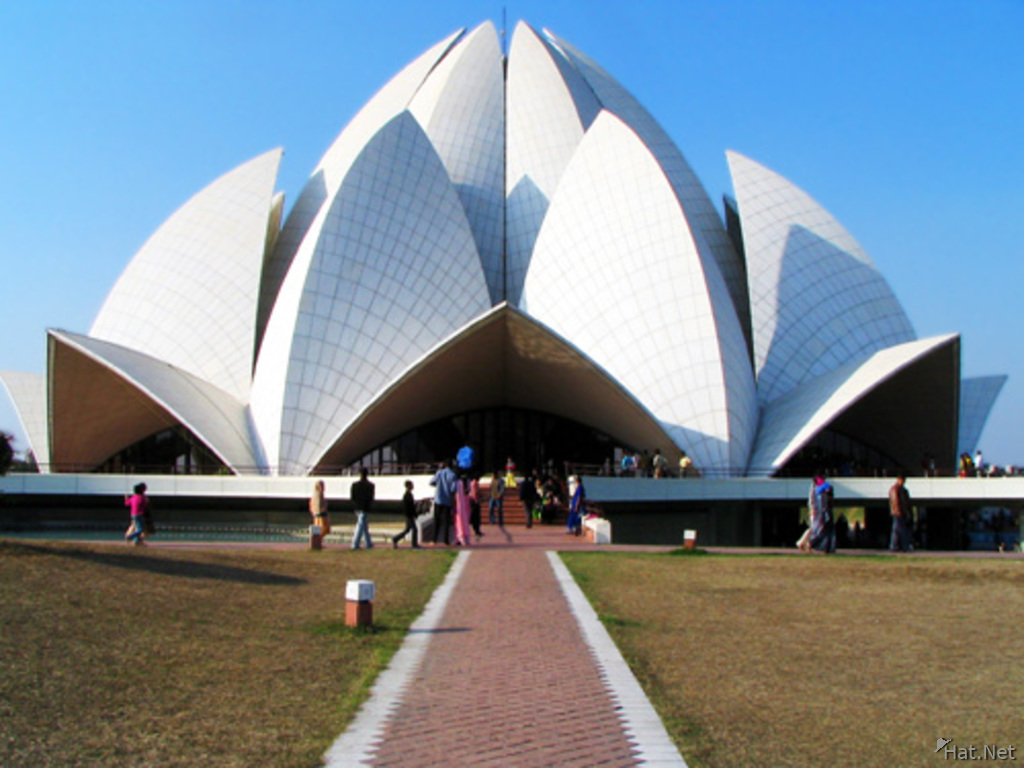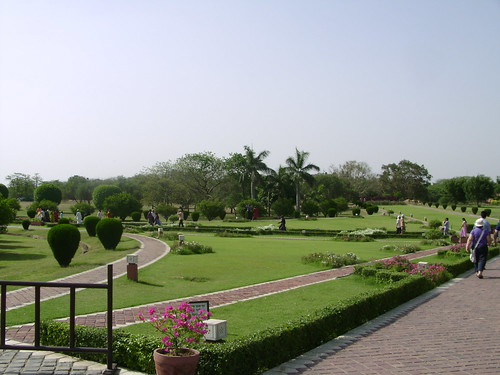Capital city of India
New Delhi

New Delhi (Hindi: नई दिल्ली, Punjabi: ਨਵੀਂ ਦਿੱਲੀ, Urdu: نے ڈالے) is the capital city of India. With a total area of 42.7 km2, New Delhi is situated within the metropolis of Delhi and serves as the seat of the Government of India and the Government of the National Capital Territory of Delhi (NCT).
Planned by Edwin Lutyens, a leading 20th century British architect, New Delhi is known for its wide, tree-lined boulevards and houses numerous national institutions and landmarks.
History
New Delhi was laid out to the south of the Old City which was constructed by Mughal Emperor Shah Jahan. However, New Delhi overlays the site of seven ancient cities and hence includes many historic monuments like the Jantar Mantar and the Lodhi Gardens.
Much of New Delhi was planned by Edwin Lutyens, a leading 20th century British architect and Herbert Baker, and contracted to Sir Sobha Singh. Lutyens first visited Delhi in 1912, and construction really began after World War I and was completed by 1931, when the city later dubbed "Lutyens' Delhi" was inaugurated. Lutyens laid out the central administrative area of the city as a testament to Britain's imperial aspirations.
Though soon Lutyens started considering other places, and finalized on a site atop the Raisina Hill, formerly Raisina Pind a Sikh village, for the Rashtrapati Bhawan, then known as Viceroy's House. The historic reason being that the hill lay directly opposite to the Dinapanah citadel, which was also considered the site of Indraprastha, the oldest Delhi. Subsequently, the foundation stone was shifted from the site of Delhi Durbar of 1911-1912, where the Coronation Pillar stood as well, and embedded in the walls of the forecourt of the the Secretariat. The Rajpath, also known as King's Way, stretched from the India Gate to the Rashtrapati Bhawan. The Secretariat building which houses various ministries of the Government of India, flanked out of the Rashtrapati Bhawan, and the Parliament House, both designed by Herbert Baker, is located at the Sansad Marg, which runs parallel to the Rajpath.
After India gained independence in 1947, a limited autonomy was conferred to New Delhi and was administered by a Chief Commissioner appointed by the Government of India. In 1956, Delhi was converted into a union territory and eventually the Chief Commissioner was replaced by a Lieutenant Governor. The Constitution (Sixty-ninth Amendment) Act, 1991 declared the Union Territory of Delhi to be formally known as National Capital Territory of Delhi. A system of diarchy was introduced under which the elected Government was given wide powers, excluding law and order which remained with the Central Government. The actual enforcement of the legislation came in 1993.
Geography and climate
With a total area of 42.7 km2, New Delhi forms a small part of the Delhi metropolitan area and is located in the Indo-Gangetic Plain because of which there is little difference in the city's altitude. New Delhi and surrounding areas were once a part of the Aravali Range, but all that is left now is the Delhi ridge. The second feature is the Yamuna floodplains; New Delhi lies west of the Yamuna river, although for the most part, New Delhi is a landlocked city. East of the river is the urban area of Shahdara. New Delhi falls under the seismic zone-IV, making it vulnerable to major earthquakes.
Transport
The Delhi Metro, constructed and operated by the Delhi Metro Rail Corporation (DMRC), connects the city with the rest of the metropolis of Delhi. Under an agreement with NDMC, DMRC can acquire land for the construction of metro rail and stations in New Delhi without any financial implications. NDMC is also constructing multi-level parking systems in collaboration with DMRC at various Delhi metro stations across New Delhi to increase parking space.The New Delhi Railway Station is the main railway station in Delhi serving many trains to important cities.
New Delhi Station is the second busiest, and one of the largest, in India. It handles over 300 trains each day, from 18 platforms connecting New Delhi with the rest of India.
Economy
Rajiv Chowk, formerly known as Connaught Place, one of northern India's largest commercial and financial centres, is located in the heart of New Delhi. Adjoining areas such as Barakhamba Road and Chankyapuri are also major commercial centres. Government and quasi government sector was the primary employer in New Delhi. The city's service sector has expanded due in part to the large skilled English-speaking workforce that has attracted many multinational companies. Key service industries include information technology, telecommunications, hotels, banking, media and tourism.
The Government of National Capital Territory of Delhi does not release any economic figures specifically for New Delhi but publishes an official economic report on the whole of Delhi annually. According to the Economic Survey of Delhi, the metropolis has a net State Domestic Product (SDP) of Rs. 83,085 crores (for the year 2004–05) and a per capita income of Rs. 53,976. The tertiary sector contributes 78.4% of Delhi's gross SDP followed by secondary and primary sectors with 20.2% and 1.4% contribution respectively.





Labels: Capital city of India, Pakistan And India

0 Comments:
Post a Comment
Subscribe to Post Comments [Atom]
<< Home